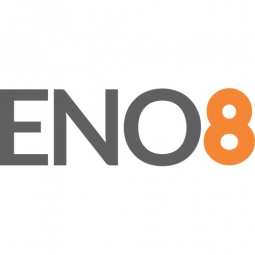Download PDF
Revolutionizing ER Experience with AI: A TeleMedCo Case Study

Technology Category
- Analytics & Modeling - Machine Learning
- Platform as a Service (PaaS) - Application Development Platforms
Applicable Industries
- Cement
- Healthcare & Hospitals
Applicable Functions
- Product Research & Development
Use Cases
- Construction Management
- Speech Recognition
Services
- System Integration
The Challenge
TeleMedCo, a startup formed by a team of doctors and business professionals, identified a significant inefficiency in the healthcare industry. The emergency room (ER) experience was found to be massively expensive and often inefficient, with 50-80% of ER visitors being in non-critical condition. This led to doctors having to prioritize treatment, running tests, and evaluating medical histories, which could result in slow or incorrect diagnoses. The challenge was to modernize, streamline, and expedite the ER experience for both doctors and patients. However, to secure buy-in from hospitals and doctor groups, TeleMedCo needed a proof-of-concept that caregivers could interact with and use. The team lacked software, hardware, or artificial intelligence expertise, and thus required a technology partner to develop a diagnosis solution and integrate it into a working prototype for demonstration purposes.
The Customer
TeleMedCo
About The Customer
TeleMedCo is a startup formed by a team of doctors and business professionals. They identified a significant inefficiency in the healthcare industry, particularly in the emergency room (ER) experience. The team recognized that the ER process was not only expensive but also inefficient, with a large percentage of ER visitors being in non-critical condition. This led to a need for doctors to prioritize treatment, often resulting in slow or incorrect diagnoses. TeleMedCo sought to apply cutting-edge technological systems and processes to modernize, streamline, and expedite the ER experience for both doctors and patients. However, they lacked the necessary technical expertise to develop a solution and required a technology partner to help them.
The Solution
In their quest for seed capital, TeleMedCo partnered with ENO8 to develop a working prototype capable of automating the entire ER 'chest pain protocol'. This prototype served as a proof-of-concept to secure backing. The solution began with a voice user interface between an iPad app and the patient. ENO8 integrated the app with IBM’s Watson and trained the AI to analyze and recognize specific conditions within chest x-rays and/or EKGs. This allowed the iPad app to move the patient either to a non-critical care protocol or automatically video conference in a physician if Watson identified an irregularity within the x-ray or EKG. The solution utilized capabilities such as native iPad app, SWIFT, Python, IBM Watson artificial intelligence integration, real-time image recognition, voice user interface, and video conferencing.
Operational Impact
Related Case Studies.

Case Study
System 800xA at Indian Cement Plants
Chettinad Cement recognized that further efficiencies could be achieved in its cement manufacturing process. It looked to investing in comprehensive operational and control technologies to manage and derive productivity and energy efficiency gains from the assets on Line 2, their second plant in India.

Case Study
Hospital Inventory Management
The hospital supply chain team is responsible for ensuring that the right medical supplies are readily available to clinicians when and where needed, and to do so in the most efficient manner possible. However, many of the systems and processes in use at the cancer center for supply chain management were not best suited to support these goals. Barcoding technology, a commonly used method for inventory management of medical supplies, is labor intensive, time consuming, does not provide real-time visibility into inventory levels and can be prone to error. Consequently, the lack of accurate and real-time visibility into inventory levels across multiple supply rooms in multiple hospital facilities creates additional inefficiency in the system causing over-ordering, hoarding, and wasted supplies. Other sources of waste and cost were also identified as candidates for improvement. Existing systems and processes did not provide adequate security for high-cost inventory within the hospital, which was another driver of cost. A lack of visibility into expiration dates for supplies resulted in supplies being wasted due to past expiry dates. Storage of supplies was also a key consideration given the location of the cancer center’s facilities in a dense urban setting, where space is always at a premium. In order to address the challenges outlined above, the hospital sought a solution that would provide real-time inventory information with high levels of accuracy, reduce the level of manual effort required and enable data driven decision making to ensure that the right supplies were readily available to clinicians in the right location at the right time.

Case Study
Gas Pipeline Monitoring System for Hospitals
This system integrator focuses on providing centralized gas pipeline monitoring systems for hospitals. The service they provide makes it possible for hospitals to reduce both maintenance and labor costs. Since hospitals may not have an existing network suitable for this type of system, GPRS communication provides an easy and ready-to-use solution for remote, distributed monitoring systems System Requirements - GPRS communication - Seamless connection with SCADA software - Simple, front-end control capability - Expandable I/O channels - Combine AI, DI, and DO channels

Case Study
Driving Digital Transformations for Vitro Diagnostic Medical Devices
Diagnostic devices play a vital role in helping to improve healthcare delivery. In fact, an estimated 60 percent of the world’s medical decisions are made with support from in vitrodiagnostics (IVD) solutions, such as those provided by Roche Diagnostics, an industry leader. As the demand for medical diagnostic services grows rapidly in hospitals and clinics across China, so does the market for IVD solutions. In addition, the typically high cost of these diagnostic devices means that comprehensive post-sales services are needed. Wanteed to improve three portions of thr IVD:1. Remotely monitor and manage IVD devices as fixed assets.2. Optimizing device availability with predictive maintenance.3. Recommending the best IVD solution for a customer’s needs.

Case Study
HaemoCloud Global Blood Management System
1) Deliver a connected digital product system to protect and increase the differentiated value of Haemonetics blood and plasma solutions. 2) Improve patient outcomes by increasing the efficiency of blood supply flows. 3) Navigate and satisfy a complex web of global regulatory compliance requirements. 4) Reduce costly and labor-intensive maintenance procedures.






